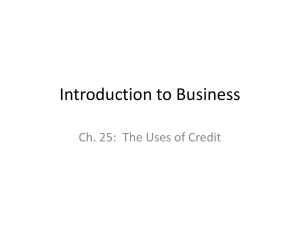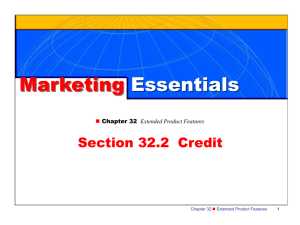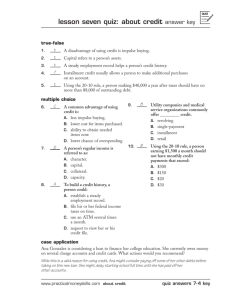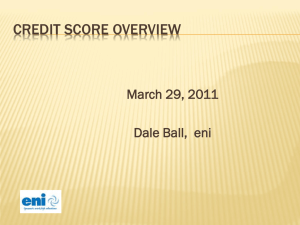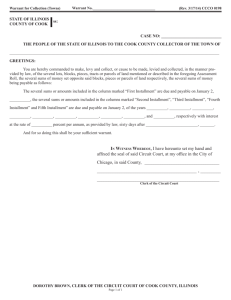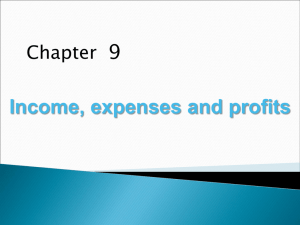CHAPTER 7 CREDIT CARDS AND CONSUMER LOANS
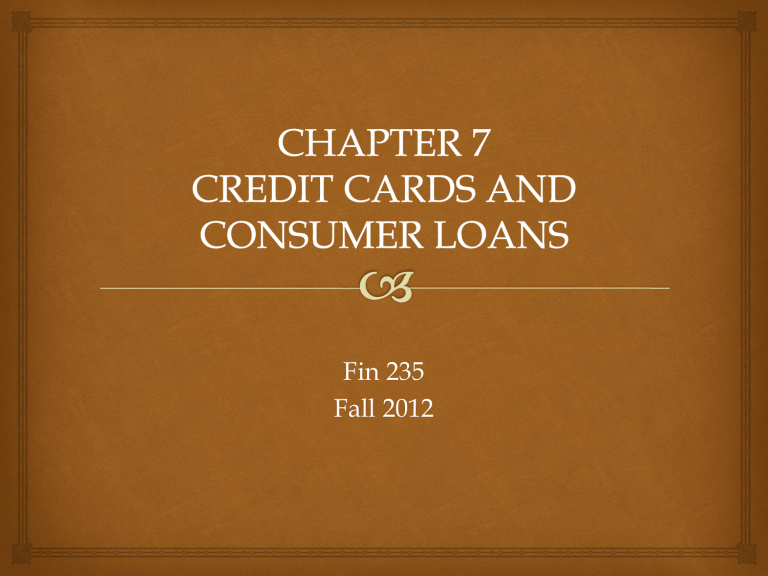
Fin 235
Fall 2012
I. LEARNING OBJECTIVES
A.
Compare the common types of consumer credit including credit cards and installment loans.
B.
Describe the types and features of credit card accounts.
C.
Manage your credit card accounts to avoid fees and finance charges.
D.
Describe the important features of consumer installment loans.
E.
Calculate the interest and annual percentage rate on consumer loans.
II. TYPES OF CONSUMER CREDIT
A.
Installment credit: car loans
B.
Noninstallment credit: single payment loans
C.
Open-ended or revolving credit: credit cards
1.
Bank cards
2.
Retail merchant cards (Sears, Belk, etc.)
3.
Travel / Entertainment cards (airlines)
D.
Personal line of credit: home equity LOC most common
E.
Service credit: grace period to pay bill – charges accrue if late
III. COSTS OF CREDIT
A.
Annual fees
B.
Transaction fees
C.
Late payment, returned check, over limit
(default rates imposed)
D.
Most cards are variable rate (tied to LIBOR or
Prime)
IV. MANAGING CREDIT
A.
Examine Credit statements carefully
1.
Billing date: last day for which transactions are included in statement
2.
Due date: date when credit card company must receive payment to avoid penalties
3.
Transaction and Posting dates: chronological order of uses and charges
4.
Grace period: timer between use and payment to avoid charges
5.
Minimum payment amount: to keep credit account in good standing.
6.
Transaction fees imposed for certain uses (international use)
7.
Any credits for merchandise returned or orders cancelled
IV. MANAGING CREDIT
B.
Interest charges accrue daily based on average daily balance
C.
Correcting Errors in Billing Statements (per Fair
Credit Billing Act)
1.
For charges greater than $50 made within 100 miles of home address
2.
Complaint must be filed with 60 days of billing date
3.
Creditors cannot impose penalties or interest or send dunning letters during the period the complaint is investigated.
IV. MANAGING CREDIT
D.
Additional Action Steps
1.
Notify merchant of error
2.
Send written notice to credit card issuer
3.
Provide photocopies of disputed statements
4.
Withhold payment
5.
Follow-up with review of credit bureau file
V. CONSUMER INSTALLMENT LOANS
A.
May be secured (collateral or cosigner) or unsecured
(good faith)
B.
Purchase Loan Installment Contracts
1.
Installment Purchase: title passes when contract signed.
2.
Conditional Sales: title passes when last payment received
(UCC Form 1 ~ mechanics lien)
C.
Calculating Interest Charges
1.
Many installment contracts are amortized: monthly payment
= principal + interest
2.
Merchant must inform of the APR on installment contracts
3.
Rule of 78s: Prepayment penalties. Read any installment contract very carefully if you plan to repay contract earlier than stated term.
VI. HOMEWORK
A.
Do the Math: 1 (parts a, b, c, d), 2
B.
Personal Financial Advisor: 1, 4
C.
Be Your Own Personal Financial Planner
1.
1 – List Credit Card Accounts (W/S 28)
[
This information is confidential and should not be turned in with homework .
]
